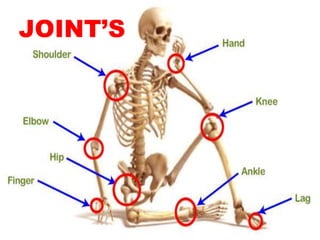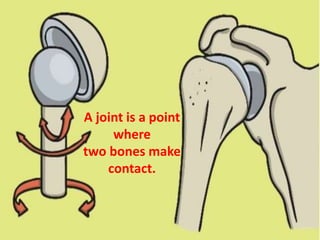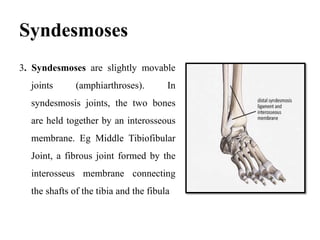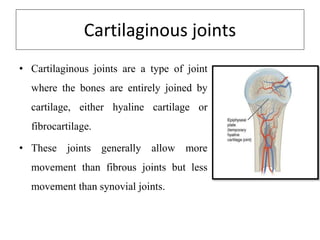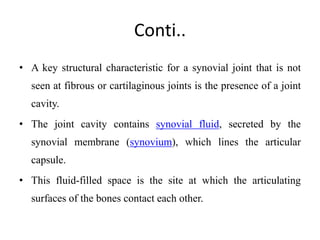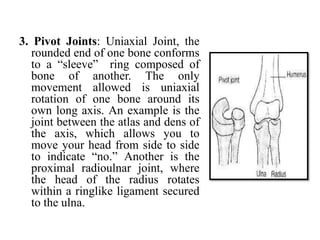The document summarizes the different types of joints in the body. There are three main classifications of joints: fibrous joints which are immovable, cartilaginous joints which allow some movement, and synovial joints which are freely movable. Synovial joints are further classified into six types based on their movement: plane, hinge, pivot, saddle, condyloid, and ball and socket. Key features of synovial joints include an articular capsule lined with synovial membrane and fluid-filled cavity to protect the cartilage surfaces and allow smooth movement.
